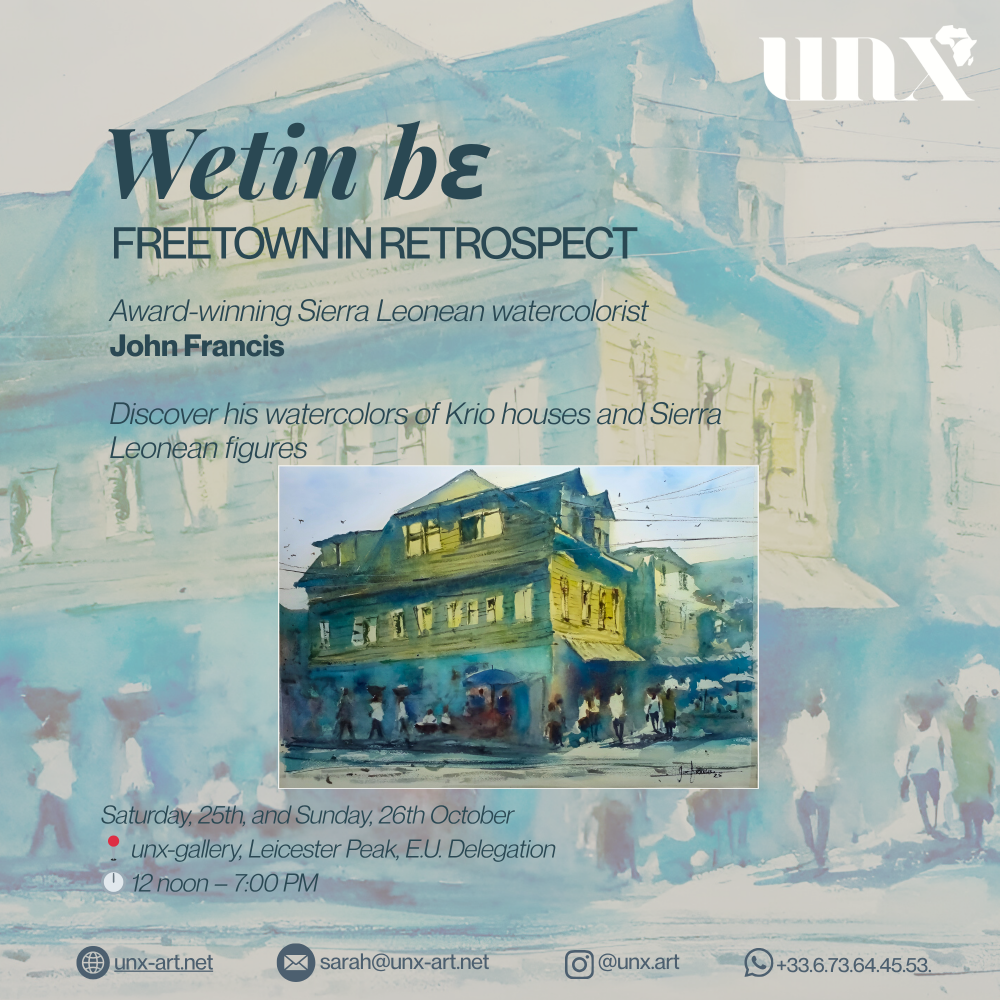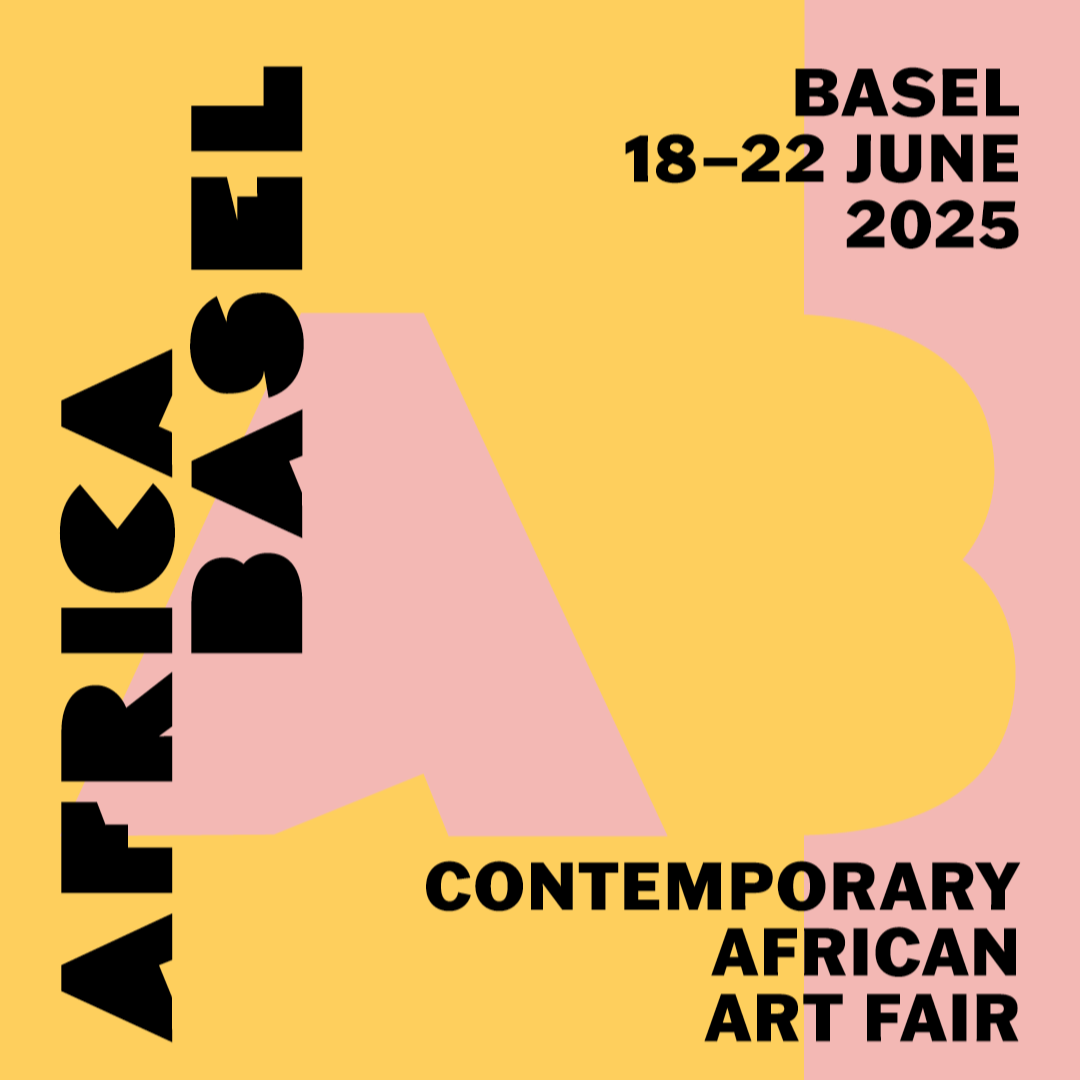Wetin bɛ: Freetown in Retrospect
 unx-gallery, Freetown — 25th & 26th October 2025
unx-gallery, Freetown — 25th & 26th October 2025
The Bod Ose and the Memory of Light
Freetown transforms in silence. Streets change, rooftops rise, balconies vanish—one replaced façade at a time. Wetin bɛ: Freetown in Retrospect invites viewers to slow down and look again, tracing memory through the delicate language of watercolor.

At the heart of the exhibition are the bod ose, the Krio wooden houses built by Africans who returned in the late eighteenth century. They were once symbols of autonomy and aspiration—homes crafted from timber, history, and determination. Today, many have been demolished or left to decay. In John Francis’s paintings, they appear suspended between presence and loss, rendered in translucent layers of pigment and light.

For Francis, watercolour is not just a medium, but a way of thinking. “Watercolor feels closest to life itself—unpredictable, delicate, and alive,” he says. In each work, washes bleed into shadow, and precision gives way to chance. The result is neither nostalgia nor documentation, but a quiet form of testimony. These paintings carry the fragments of a city whose heritage is vanishing in plain sight.

The question embedded in the exhibition’s title — Wetin bɛ? — lingers. What happened? What is still happening? The civil war scarred Freetown, but indifference continues the erasure. Francis paints not to mourn, but to insist that memory deserves attention, that architecture is more than wood or nails—it is identity.

Born in Freetown and self-taught, Francis first exhibited at the historic Gaga Gallery before the war. Years spent in exile in The Gambia deepened his relationship to watercolor—its fluid unpredictability, its quiet discipline. Today, his work forms part of collections across Sierra Leone and abroad, including the World Bank and the Sierra Leone Embassy in Senegal.

Wetin bɛ: Freetown in Retrospect brings these reflections home, inviting viewers to encounter the city not as it is, but as it remembers itself—fragile, luminous, persistent.
Wetin bɛ: Freetown in Retrospect invites viewers to slow down and look again, tracing memory through the delicate language of watercolor.

Wetin bɛ: Freetown in Retrospect
October 25–26, 2025 | unx-gallery, Leicester Peak, Freetown
A quiet meditation on Freetown’s disappearing wooden houses—the bod ose built by freed Africans in the late 18th century. In translucent washes of colour, John Francis transforms erasure into memory, painting architecture as living history. Through water and light, he asks a simple question with a heavy echo: Wetin bɛ? — what happened?
See More
Regards croisés: west Africa reflected on lake geneva
July 31 – August 20, 2025 | Clinique de Genolier, Switzerland
An unexpected dialogue between West African contemporary art and Swiss serenity. Eight artists from Nigeria, Sierra Leone, and Togo explore resilience, identity, and healing in unx-art’s second Swiss exhibition, set in a space where care and creativity meet.

Africa Basel: Held in memory, Forged in Form
June 18 – 21, 2025 | Ackermannshof, Basel, Switzerland
UNX Art’s exhibition Held in Memory, Forged in Form features Helen Nzete and Clément Gbegno, presenting sculptural and abstract works that reflect themes of memory, disappearance, and emotional restoration.

Matter of Now: 7 Nigerian minds in Freetown
May 16 – 24, 2025 | unx-art Gallery, Freetown, Sierra Leone
A collective exhibition presenting eight Nigerian artists delving into the complexity of the present moment — where memory, culture, and introspection intersect — in unx-art’s debut show at its Freetown gallery.

Giving Goddess: unx-art gallery space debutes
March 20 – April 30, 2025 | unx-art Gallery, Freetown, Sierra Leone
A solo exhibition by Hawa-Jane Bangura, blending digital and traditional media to celebrate African history, femininity, and solidarity. unx-art’s inaugural exhibition in Freetown introduced her empowering vision to a new audience.

